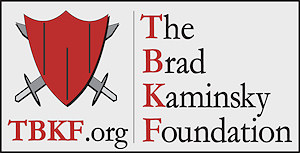|
Las Vegas endurance coach shares 5k training secrets
By Nancy Dickinson
Congratulations on the decision to take the leap of faith and run your first 5k! Life as you know it is about to change for the better, given the newfound BFF in your life: running.
As an endurance coach and fitness trainer, I get countless requests for info from people looking to tackle their first 5k. The 5k is, after all, a veritable right of passage in the endurance world, the landmark that states, “Hey, I LASTED!” There's much cause for celebration after your first 5k, because there's so MUCH hard work involved.
Before breaking down that wonderful work that is to be your mileage, pacing and weekly run schedule, it’s extremely important to figure out exactly what's driving you into this fitness endeavor. Not everyone takes on a 5k for the same reason and therefore there's so such thing as a one-size-fits-all 5k prep plan. Some are being dragged by a coworker, some have fallen in love with the endorphin release, some are just plain competitive, and some are sharpening the tip of their weight loss plan. NONE OF YOU WILL TRAIN THE SAME. Still I’d like to focus on the lesser-known run variables outside of mileage that make or break a run program for EVERYONE.
Many first 5k'ers daydream of gazelle-like bodies flying over the finish line while ridding their bodies of those pesky last 10 pounds. And many will soon discover that there's a fine line to ride while endurance training and training for weight loss. Before you glue yourself to the treadmill for the next 72 hours to look good in your Nike shorts come race day, you ought to know a few things about running that can derail your skinny-pants fastening.
1) Eat smart while you train. A run workout can feel like you expended more calories than you actually did. Running is hard, but did 25 minutes really warrant a Denny’s Grand Slam? Remedy: Watch your caloric intake after workouts. Eat protein with a complex carb within the hour to fuel you right for your day and next workout, but be reasonable with portion size. In addition, the opposite caloric issue of eating too FEW calories while taking on a new fitness regimen can also have a negative outcome. If one isn’t eating enough calories and is asking much of their bodies, their body will begin to hold on to every single calorie making not only weight loss a distant dream, but their metabolism will go on a lazy vacation. Slow metabolisms are a red flag for runners as we need to process food and get energy from it, immediately!
2) Pay attention to hydration. Running, especially if you're not hydrating enough, causes inflammation in your body. Running can be considered abuse from many perspectives, and your body after a tough run (or week/month of running) may respond all over as though it’s received one large injury. And swell up! Remedy: Drink plenty of water (go for 20 ounces an hour per workout) and stretch well to reduce lactic acid and inflammation.
3) Take your training slowly. Do too much too fast and your brand-new loving relationship with a 5k plan will come to a screeching halt. So, don’t do extra miles and don’t veer off your plan! Remedy: Talk to a professional run coach to help you map out a good recovery plan with appropriate mileage. Without tools like the foam roller and good stretch technique/rehab routine (plus icing!), you can easily get injured. Get injured and there goes your ability to do the work to lose weight or get a personal record. So simply embrace the new joy of running!
Now you are better prepared to fall deeper in love with the open road! While before the treadmill might have provoked a cringe, now it’s replaced happy hour. Fueled by enthusiasm and knowledge it’s now finally time to focus on that which we were born to do—running! Like previously mentioned, there’s no single plan that works for EVERYONE. This is an outline of a solid plan for the beginner runner. There’s wiggle room to incorporate chosen day off, different mediums of cross training and run/walk ratio (to be discussed). Form tips and pacing advisory will follow this plan, but before you even think about your biomechanics you must first SCHEDULE THIS INTO YOUR LIFE IN THE MOST ATTAINABLE AND REALISTIC MANNER. Kids? Career? Obligations? Consider ALL of those things when mapping your run life.
Having a schedule similar to this is your run lifeline! Structure equals success so stay on track!
As you can see, there are eight beautiful weeks of preparation for a 5k. CT means “cross training.” This is NOT OPTIONAL! It can, however, be moved to a day that best fits your schedule, but try not to have the two cross-training days back to back. The cross training can be something like biking, elliptical, swimming or stair machine, just to name a few. It’s also very important to implement some training that strengthens the muscles that drive and support you while running (i.e., core muscles, hamstrings, glutes and smaller stabilizing muscles in the ankles and hips). Pilates, yoga or cross fit are examples of excellent practices for run-specific strength training. YOU MUST WORK AT BEING STRONG IN ORDER TO RUN OR YOU RISK GETTING INJURED. This is a whole other monstrous and hugely important topic in and of itself, and your plan should be addressed by a professional coach!
The rest days are also NOT OPTIONAL. This is when your muscles get glycogen restoration and it’s simply the ONLY way in which you will be able to keep going for eight weeks and beyond. More advanced runners can opt to do only one rest day with coach’s instruction.
For those who are still mastering running for more than just a few minutes at a time, a “short” run can seem like a marathon. What matters most isn’t going fast, but rather just having the consecutive time on your feet. Try a walk/run ratio to start. Run 2 minutes and walk 4 minutes to your destination. Each week bring the ratio down, for instance, to a 3 run and 2 walk. Be careful not to change the ratio too drastically, too fast. If you go from walking 3 minutes to running 1 mile, you’re bound for cheering on the sidelines with your limp and new injury, which is SO demoralizing in every capacity.
Like strength training, form and pace are topics that can be explored endlessly, yet you may still feel like the utter novice. Get counsel from a coach for the smart tips and embrace these basic principles.
I could give eternal tips on form or preparation, but I’d rather finish with a more relevant thought: Never take a single beautiful run for granted. There’s good reason for an exercise endorphin release being coined as a “runner’s high.” Running is there whenever we need, helping us through life’s trials, bringing people together and making it so we have a solid relationship with our mind and body. If you can get through a 5k or over that big hill, what exactly can’t we accomplish?! Running is the gift that gives endlessly throughout our lives. Prepare, execute and fall in love.
Nancy Dickinson is a Las Vegas-based fitness trainer and endurance coach. Her website is CoreHore.com. Follow her at Corehore.blogspot.com.
|
||||||||||||||||||||||||||||||||||||||||||||||||||||||||||||||||||||||||













